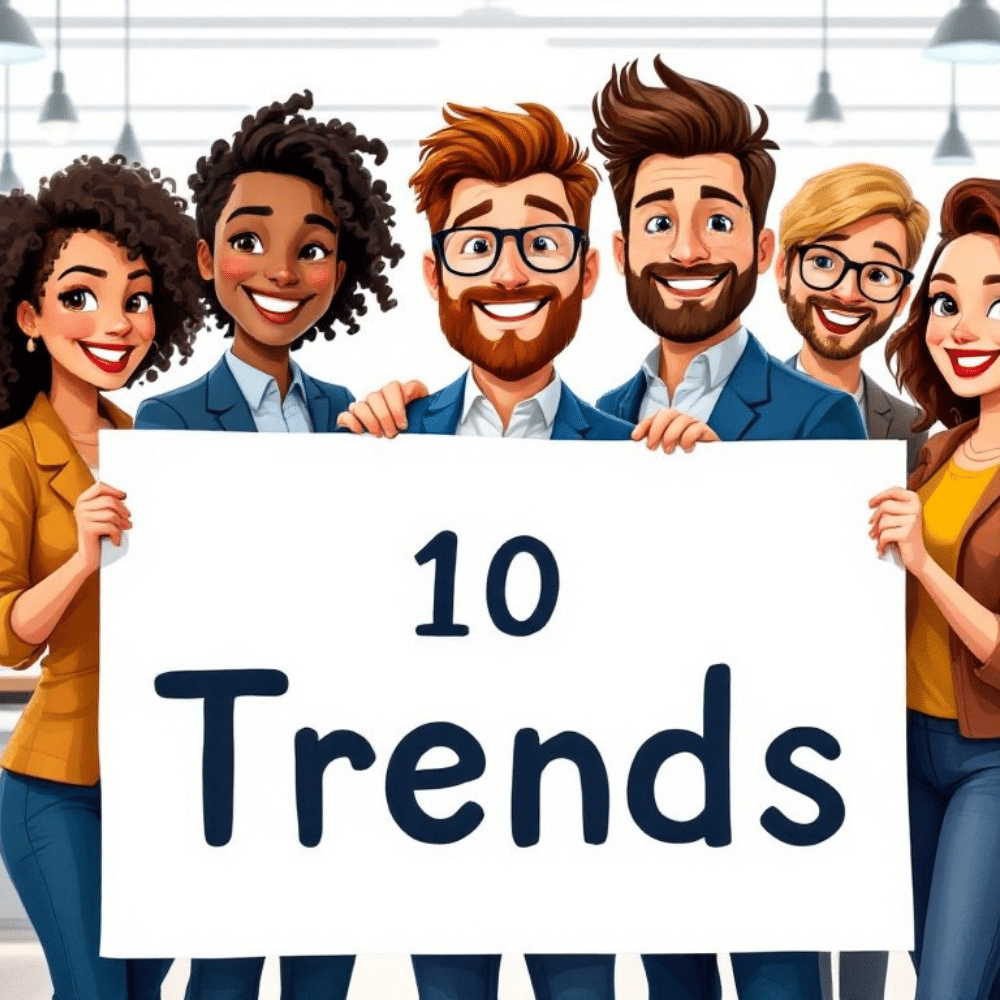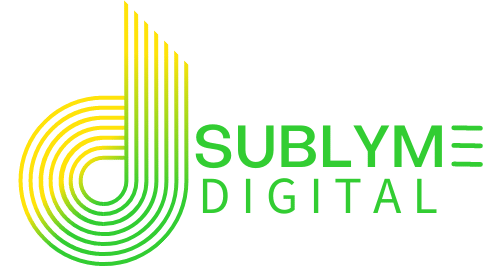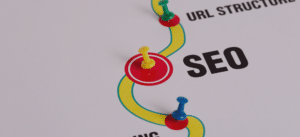Elevate Your Online Presence: 10 SEO Tips for 2025
When setting up a Google Ads campaign, one of the choices advertisers face is whether to enable Google Search Partners. This feature allows your ads to appear on platforms beyond Google Search, such as YouTube and partner websites like Ask.com. While it sounds like a great way to broaden your reach, it’s not always the best option for every business.
In this blog, we’ll break down what Google Search Partners are, their benefits and risks, and provide actionable recommendations to help you make an informed decision. Whether you’re a beginner or an experienced advertiser, understanding this feature can make a significant difference in your campaign’s success.
Key Takeaways:
- Discover the top 10 web design trends for 2025 and their impact on user experience.
- Learn how small businesses can adopt these trends to stay competitive and innovative.
- Explore actionable tips for integrating these trends into your website to enhance engagement and conversions.
- Understand the importance of balancing aesthetics with functionality in modern web design.
1. AI-Driven Personalization
Imagine visiting a website that feels like it was designed just for you. That’s the magic of AI-driven personalization. This trend uses artificial intelligence to analyze user behavior—like browsing history, location, or even the time of day—and adapts the website experience accordingly. For example, an online clothing store could display winter coats to visitors from snowy regions while showcasing swimwear to those in warmer climates. It’s all about making users feel understood and valued.
AI-driven personalization boosts engagement by showing users exactly what they need, increases conversions with tailored recommendations, and enhances customer loyalty by creating a more personal experience. To get started, small businesses can add AI-powered chatbots to provide real-time, customized support, use tools like Google Optimize for dynamic content personalization, and analyze user data to create tailored experiences that feel intuitive and seamless.
2. Minimalism with a Twist
Minimalism is still king, but in 2025, it’s getting a bit more adventurous. Think clean layouts with bold typography, vibrant color splashes, and unexpected design elements that grab attention. It’s like wearing a simple black outfit but pairing it with a statement necklace—it’s all about balance.
This approach creates a visually clean, distraction-free experience while leaving a lasting impression with bold, memorable design choices. Small businesses can achieve this by choosing a neutral color palette with vibrant accents sparingly, experimenting with bold fonts for headlines and CTAs to add personality, and using white space effectively to give content room to breathe.
3. Immersive 3D Visuals
Gone are the days of flat, lifeless websites. In 2025, 3D visuals are taking over, creating immersive, interactive experiences that keep users engaged. Imagine a website where you can rotate a product, zoom in on details, or interact with virtual objects—it’s like bringing the showroom to your screen.
3D visuals capture attention with dynamic, visually stunning elements, encourage users to spend more time on your site, and enhance the storytelling experience by adding depth and realism. Small businesses can leverage tools like Spline or Three.js to create interactive models, use animations to tell their brand story dynamically, and partner with a design agency to ensure seamless integration.
4. Dark Mode Dominance
Dark mode is more than just a trend—it’s a user preference that’s here to stay. Offering a dark mode option not only reduces eye strain but also gives your website a sleek, modern look. It’s like dimming the lights in a cozy restaurant—it sets the mood while making everything easier to see.
Dark mode improves readability in low-light environments, reduces eye strain for users who spend long hours online, and enhances visual appeal with a bold, contemporary aesthetic. Small businesses can add a toggle feature for light and dark modes, use high-contrast colors to ensure text remains readable, and test their dark mode designs on multiple devices and browsers for consistency.
Web design in 2025 isn’t just about looking good—it’s about creating experiences that captivate, engage, and drive results.

5. Voice User Interfaces (VUIs)
Ever asked Siri or Alexa a question? That’s the power of voice user interfaces (VUIs). In 2025, websites are integrating voice functionality to make navigation faster, easier, and more accessible. Imagine a user saying, “Find me the best deals,” and your website instantly delivering results. It’s like having a personal assistant built into your site.
VUIs improve accessibility for users with disabilities, speed up navigation by eliminating the need for typing, and align with the growing popularity of voice assistants. To implement this trend, small businesses can use tools like Speechly or Alan AI to build voice-enabled features, optimize content for voice search using conversational language, and test the functionality to ensure accuracy and responsiveness.
6. Micro-Interactions for Engagement
Micro-interactions are the unsung heroes of web design. These small, subtle animations—like a button changing color when hovered over or a form field shaking when an error occurs—make your website feel alive and interactive. It’s like a friendly nod or smile—it’s subtle, but it makes a big difference in how users feel.
These interactions enhance user experience by providing instant feedback, make your website feel more interactive and engaging, and guide users through actions, reducing confusion and errors. Small businesses can add hover effects to buttons and links, use animations to indicate loading or progress, and incorporate playful micro-interactions in forms to make them less intimidating.
7. Sustainable Web Design
Sustainability is no longer just for products—it’s for websites, too. In 2025, businesses are focusing on creating energy-efficient websites that minimize environmental impact. Think of it like switching to reusable bags or energy-efficient appliances—it’s good for the planet and your brand.
Sustainable web design reduces your website’s environmental impact, appeals to eco-conscious customers, and improves performance by optimizing resource usage. Small businesses can optimize images and code to reduce energy consumption, choose eco-friendly hosting providers that use renewable energy, and highlight their sustainability efforts to connect with like-minded users.
8. Advanced Motion Design
Motion design is no longer just about flashy animations—it’s about creating purposeful, engaging experiences. Scroll-triggered effects, smooth transitions, and dynamic visuals guide users through your content like a well-told story. It’s like watching a movie where every scene flows seamlessly into the next.
This approach captures attention with visually dynamic elements, keeps users engaged by adding movement and flow, and enhances storytelling by guiding users through your content. Small businesses can use scroll-triggered animations to reveal content step by step, add subtle motion effects to headlines or images to grab attention, and avoid overloading their sites with animations to maintain balance.
9. Inclusive Design Practices
Accessibility isn’t just a nice-to-have—it’s a must. Inclusive design ensures your website is usable for everyone, regardless of their abilities. From screen reader compatibility to keyboard navigation, these features make your site more welcoming and user-friendly.
Inclusive design expands your audience by making your site accessible to all users, improves SEO by meeting accessibility standards, and demonstrates your commitment to inclusivity. Small businesses can add alt text to all images, use high-contrast color schemes to improve readability, and test their sites with tools like WAVE or Axe to identify and fix accessibility issues.
10. Augmented Reality (AR) Integration
Augmented reality is changing the game for e-commerce, real estate, and beyond. Imagine letting customers “try on” a product virtually or explore a space without leaving their home. It’s like bringing the showroom to your users’ fingertips.
AR creates immersive, interactive experiences that drive engagement, reduces purchase hesitation by letting users visualize products in real life, and differentiates your brand with cutting-edge technology. Small businesses can use AR tools like 8thWall or ZapWorks to create interactive experiences, offer virtual try-ons for products like clothing or furniture, and partner with a web design expert to implement AR seamlessly.
We Build Cool
Success Stories
365 Data Centers
Discover how we rapidly rebuilt and optimized a 30-page website for 365 Data Centers, restoring their online presence and managing digital ad campaigns across key regions to drive engagement and growth.
XTECH Football Pads
Discover how we transformed XTECH Football Pads‘ digital presence, boosting their online sales and tripling website traffic through innovative website development and user experience enhancements.
BeEarth Foundation
Discover how we partnered with the BeEarth Foundation to develop a website that aligns with their mission of sustainability and global engagement. Our work has significantly increased their online visibility and engagement, supporting their efforts to promote sustainable development.
We Recycle Solar
Learn how we illuminated digital success for We Recycle Solar by completely redesigning their website to reflect their leadership in the growing solar recycling industry and implementing strategic digital advertising campaigns that enhanced their visibility at key industry events.
Preferred Home Health Care & Nursing Services
Explore how we elevated the digital presence of Preferred Home Health Care & Nursing Services by enhancing their website for better lead generation, building a dedicated site for staff recognition, and optimizing SEO for their location pages.
What Our Clients Say: Elevating Online Success
FAQs:
Answer: The top trends include AI-driven personalization, immersive 3D visuals, dark mode, voice user interfaces, and sustainable web design.
Answer: Start small! Features like dark mode and micro-interactions are easy to implement. For advanced trends like AI or AR, partnering with Sublyme Digital can simplify the process.
Answer: Accessibility ensures your site is usable for everyone, including people with disabilities. Plus, it improves your SEO and expands your audience.
Answer: Sustainable web design focuses on creating energy-efficient websites with minimal environmental impact. This includes optimizing performance, using eco-friendly hosting, and reducing resource consumption.
Answer: Identify your goals and audience. For example, if you’re in retail, AR and AI-driven personalization can enhance the shopping experience
Final Thoughts:
Web design in 2025 is all about innovation and user focus. By embracing trends like AI personalization, immersive visuals, and inclusive design, small businesses can create websites that are not only visually stunning but also highly functional.
And here’s the best part: you don’t have to do it alone. At Sublyme Digital, we specialize in helping small businesses stay ahead of the curve. Whether you need a complete website redesign or just a few trend-inspired updates, we’ve got you covered.
While these trends will help you stay ahead in 2025, a strong foundation is key to success. Learn more about web design essentials for small businesses to build a website that’s modern, user-friendly, and effective.
Let's Build Something Sublyme
Stay competitive in 2025 with a website that’s modern, user-focused, and packed with the latest design trend and take your online presence to the next level.



